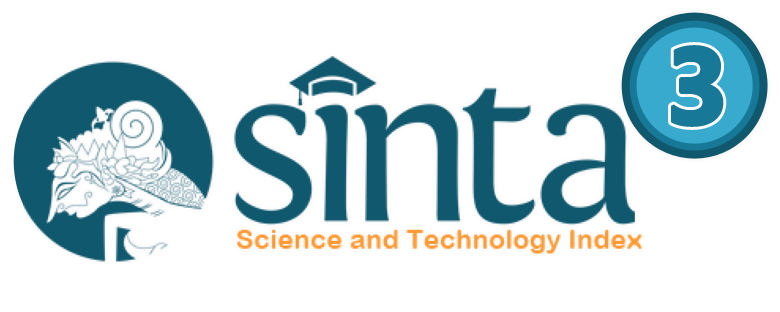Faktor – Faktor Yang Mempengaruhi Literasi Keuangan Digital Siswa : Peran Pendidikan di Keluarga Sebagai Mediasi
Abstract
Full Text:
PDFReferences
Adnan, M. F., Rahim, N. M., & Ali, N. (2023). Determinants of Digital Financial Literacy From Students’ Perspective. Corporate Governance and Organizational Behavior Review, 7(2), 168– 177. https://doi.org/10.22495/cgobrv7i2p15
Aulia, G. Y., & Putra, S. G. (2023). Tingkat literasi keuangan digital (studi pada mahasiswa fakultas ekonomi dan bisnis islam universitas islam negeri mataram). Jurnal Perbankan Syariah, 2(1), 26–38. https://journal.uinmataram.ac.id/index.php/jps/article/view/7835
Azeez N.P, A., Akhtar S.M., J., & Banu M., N. (2022). Relationship between Demographic Factors and Digital Financial Literacy. The Romanian Economic Journal, 84. https://doi.org/10.24818/rej/2022/84/04
B, S. N., Jatmika, S., & Purbonuswanto, W. (2022). Proceedings of the 7th Progressive and Fun Education International Conference (PROFUNEDU 2022). In Proceedings of the 7th Progressive and Fun Education International Conference (PROFUNEDU 2022) (Vol. 1, Issue 2015). Atlantis Press SARL. https://doi.org/10.2991/978-2-494069-71-8
Baranidharan, S., Sankarkuma, A. V., Chandrakala, G., & Narayana, R. (n.d.). The Role of Social Media in Empowering Digital Financial Literacy. 17.
Chin, W. W. (1998). The Partial Least Squares Approach to Structural Equation Modeling. January 1998.
Hair, J. F., Risher, J. J., Sarstedt, M., & Ringle, C. M. (2019). When to use and how to report the results of PLS-SEM. European Business Review, 31(1), 2–24. https://doi.org/10.1108/EBR-11- 2018-0203
Hair, J. F., Sarstedt, M., & Ringle, C. M. (2021). Partial Least Squares Structural Equation Modeling. Handbook of Market Research, November, 587–632. https://doi.org/10.1007/978-3- 319-57413-4_15
Lachowicz, M. J., Preacher, K. J., & Kelley, K. (2018). A novel measure of effect size for mediation analysis. Psychological Methods, 23(2), 244–261. https://doi.org/10.1037/met0000165
Lamada, M., Rahman, E. S., & Herawati. (2019). Analisis Kemampuan Literasi Siswa SMK Negeri di Kota Makassar. Jurnal Media Komunikasi Pendikan Teknologi Dan Kejuruan, 6(1), 1–6. https://ojs.unm.ac.id/mkpk/article/view/12000
Muhammad Naufal Fadhlurahman. (2023). Literasi Keuangan Keluarga: Inklusivitas Keuangan Berbasis Gender, Langkah Strategis Menuju Indonesia Emas 2045. Kementrian Keuangan Republik Indonesia. https://djpb.kemenkeu.go.id/portal/id/berita/lainnya/opini/4157- literasi-keuangan-keluarga-inklusivitas-keuangan-berbasis-gender,-langkah-strategis- menuju-indonesia-emas-2045.html#:~:text=Berdasarkan Hasil Survei Nasional Literasi,yang sebesar 38%2C03%25.
Munthasar, Yulindawati, & Hasnita, N. (n.d.). Pengaruh Pengetahuan dan Pendidikan Terhadap Literasi Keuangan Digital Masyarakat Kota Banda Aceh. 146–157.
Nuris, D. M., & Rahmawati, T. (2021). Faktor-Faktor Yang Mempengaruhi Literasi Keuangan Mahasiswa Pendidikan Akuntansi di Era Digital. Jurnal Pendidikan Akuntansi (JPAK), 9(3), 331–339. https://doi.org/10.26740/jpak.v9n3.p331-339
Pangestu, Stevanus, Karnadi, & Article, E. B. (2020). The effects of financial literacy and materialism on the savings decision of generation Z Indonesians The effects of financial literacy and materialism on the savings decision of generation Z Indonesians. https://doi.org/10.1080/23311975.2020.1743618
Rahayu, R. (2022). Analisis Faktor-Faktor yang Mempengaruhi Tingkat Literasi Keuangan Digital: Studi pada Generasi Z di Indonesia. Reviu Akuntansi Dan Bisnis Indonesia, 6(1), 74–87. https://doi.org/10.18196/rabin.v6i1.14268
Sari, D. E., Selviana, E. A., Brilliani, Asila, N. F., & Jannah, M. (2022). The Effect of Financial Literature and Financial Technology on Financial Inclusion Among Accounting Student. International Journal of Social Science and Business, 6(3), 310–315. https://doi.org/10.23887/ijssb.v6i3.40508
Sarstedt, M., Ringle, C. M., & Hair, J. F. (2017). Handbook of Market Research. In Handbook of Market Research (Issue September). https://doi.org/10.1007/978-3-319-05542-8
Sarwono, J., & Narimawati, U. (2015). Membuat skripsi, tesis dan disertasi dengan partial least square SEM (PLS SEM).
Schermelleh-Engel, K., Moosbrugger, H., & Müller, H. (2003). Evaluating the fit of structural equation models: Tests of significance and descriptive goodness-of-fit measures. MPR- Online, 8(May 2003), 23–74.
Silinskas, G., Ahonen, A. K., & Wilska, T. A. (2023). School and family environments promote adolescents’ financial confidence: Indirect paths to financial literacy skills in Finnish PISA 2018. Journal of Consumer Affairs, 57(1), 593–618. https://doi.org/10.1111/joca.12513
Sisilia, & Harsono. (2022). The Influence of Financial Literacy, Family Environment, and Pocket Money on Student Financial Management at Universitas Muhammadiyah Surakarta. International Conference on Education Innovation and Social Science (ICEISS), 2012, 441–449.
Smith, E. E. (2023). Literasi digital , media sosial , dan pembelajaran sarjana : apa yang menurut siswa perlu mereka ketahui ? International Journal of Educational Technology in Higher Education. https://doi.org/10.1186/s41239-023-00398-2
Taufani, M. R. I. (2023). Peran Besar LPS Tingkatkan Literasi Keuangan Masyarakat RI. CNBC Indonesia. https://www.cnbcindonesia.com/research/20231204130339-128-494335/peran- besar-lps-tingkatkan-literasi-keuangan-masyarakat-ri
Tony, N., & Desai, K. (2020). Dampak Literasi keuangan digital terhadap inklusi keuangan digital. Jurnal Internasional Penelitian Ilmiah & Teknologi. www.ijstr.org
Ulfatun, T., Dewi, T. L., Nikmah, Z. I., & Alphonse, S. (2023). Error Analysis of Students in Solving the Pisa Financial Literacy Questions. Jurnal Pendidikan Ilmu Sosial, 33(1), 118–134.
DOI: http://dx.doi.org/10.24036/jmpe.v7i2.15822


